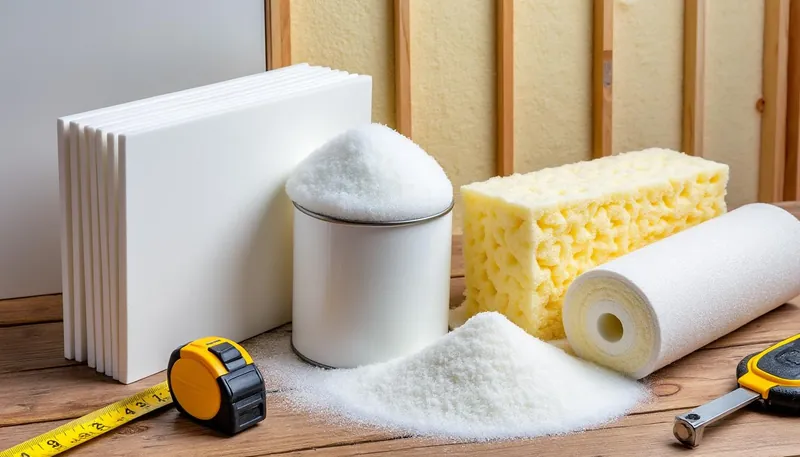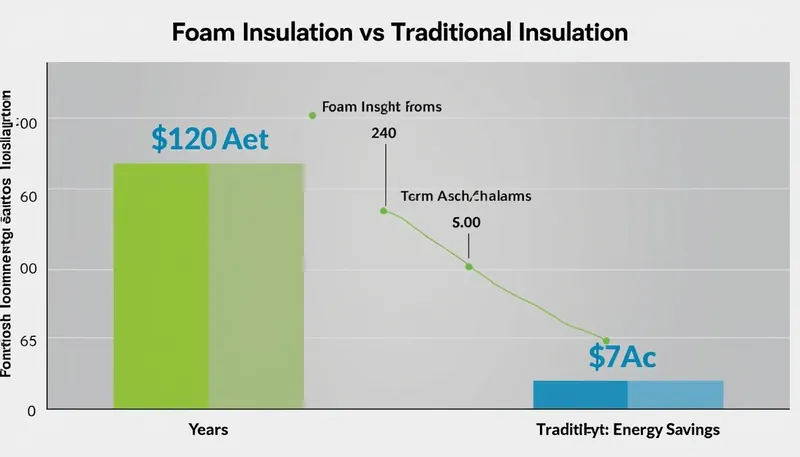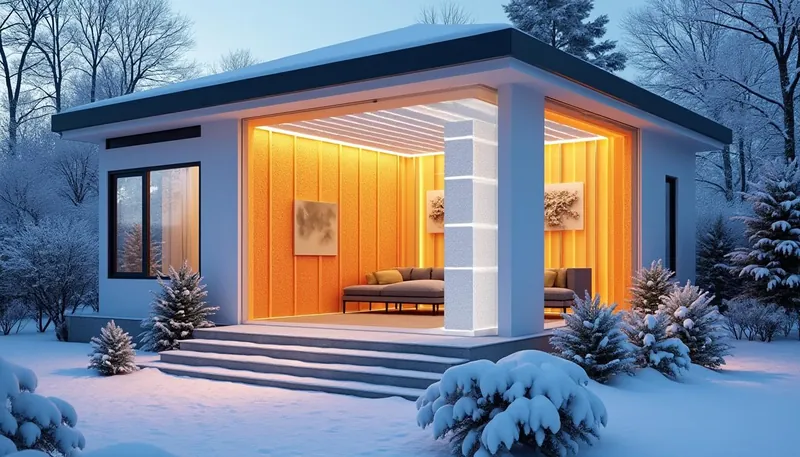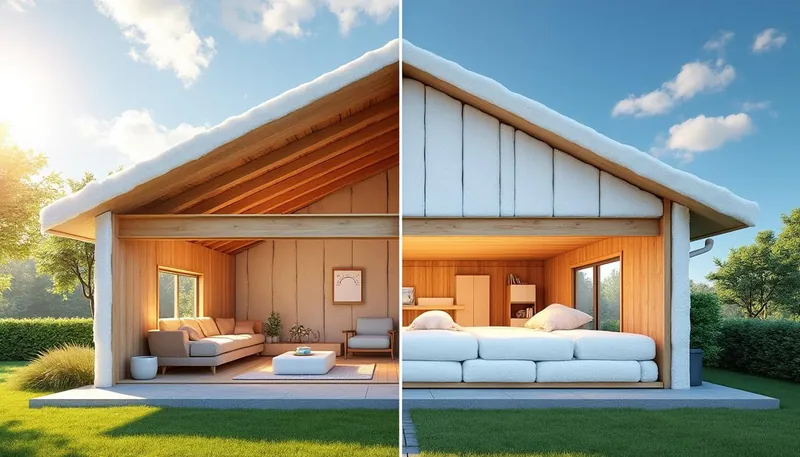Many homeowners today are shifting towards more energy-efficient solutions, and one option that consistently stands out is foam insulation. Its ability to seal air leaks while providing significant thermal resistance has garnered the attention of many in the construction and renovation industries. Most notably, foam insulation can change the dynamics of how heating systems operate within a home, leading to potential reductions in energy consumption and overall heating costs. As we move into a future dominated by sustainability and energy efficiency, understanding how foam insulation techniques can influence your HVAC systems is crucial.
When considering foam insulation options, products like Icynene, Dow Froth-Pak, and Tiger Foam provide various benefits such as moisture resistance and an impressive R-value per inch, which means they don’t need to be thick to be effective. Each of these products can offer a level of flexibility and sealing capacity that traditional insulation methods often lack. Homeowners are increasingly seeing foam insulation as a way to reduce their dependence on heating systems, leading to discussions around what that really means for HVAC performance and overall comfort in living spaces.
- 🛠️ Foam insulation provides superior air sealing compared to traditional insulation.
- 🌡️ Properly installed foam insulation can lower heating and cooling costs significantly.
- ⚖️ Understanding the impact on HVAC systems before installation is vital.
- 🏠 Homeowners are seeing an increase in indoor comfort with better energy efficiency.
The Insulating Power of Foam Types
When we think about foam insulation, we need to dive deeper into the different types available and their distinct characteristics. Within the foam category, you primarily find two kinds: open-cell and closed-cell foam. Each has unique properties that can impact not just insulation but also air quality and moisture levels throughout a space.
Open-Cell vs. Closed-Cell Foam
Open-cell foam, such as certain formulations of Touch ‘n Seal and Handi-Foam, is known for its flexibility. It expands upon application, filling gaps and creating an effective air barrier. You might be thinking closure and moisture management are strong points for consideration. With open-cell foam, air can still pass through, which is beneficial for balancing indoor humidity levels. However, it retains less heat compared to its closed-cell counterpart.
On the flip side, closed-cell foam, including products like Demilec and BASF Spraytite, boasts a much higher R-value and acts as a moisture barrier, making it favorable in areas prone to mold and dampness. This coating cuts down on air transfer that can lead to drafty living environments. As such, closed-cell foam can provide a higher insulation value for smaller spaces, contributing to a more energy-efficient home overall.
| Type of Foam | R-Value per Inch | Moisture Resistance | Application Area |
|---|---|---|---|
| Open-Cell Foam | 3.5 – 4 | Minimal | Walls, ceilings, and floors |
| Closed-Cell Foam | 6 – 7 | Extensive | Exterior walls, roofing, basements |

Effect on Heating Systems
Now, let’s connect the dots on how foam insulation fundamentally alters heating system needs. As it significantly minimizes air leakage, it also leads to reduced dependence on your HVAC systems. Homeowners will often need smaller systems, or adjust their existing systems to match the efficiency of their newly insulated space. This is where matters become critical: if your home is suddenly sealed effectively, an oversized HVAC unit will cycle on and off more frequently without managing humidity levels, leaving you feeling hot and sticky.
The relationship between foam insulation and heating systems can be summed up as follows:
- 💡 Proper insulation often allows for downsized HVAC systems.
- 🌀 HVAC systems may need adjustments to account for indoor air quality.
- ❌ Oversized units can lead to increased humidity if not handled correctly.
Indoor Air Quality Considerations
With the advantages of foam insulation come challenges, especially regarding indoor air quality (IAQ). While these products are splendid at keeping outdoor air from seeping in, the same tight seal can trap pollutants, allergens, and humidity inside. An effective home needs to find a balance between insulation and proper ventilation to maintain comfort and health.
Ventilation Solutions
Proper ventilation can be achieved through various means. For instance, deploying energy recovery ventilators (ERVs) can effectively provide fresh air while expelling stale air, helping balance the indoor environment without compromising energy efficiency. Similarly, whole-house dehumidifiers become pertinent in homes with foam insulation, especially if you notice humidity levels rising as a result of shortened air conditioning cycles. It’s essential to monitor relative humidity carefully to avoid mold and mildew issues.
Remember:
- 🏡 Fresh air exchange is crucial for good indoor air health.
- 💧 Dehumidifiers can be beneficial after foam installation.
- 📊 Regular maintenance of ventilation solutions is key.
Cost-Benefit Analysis of Foam Insulation
When evaluating any home improvement project, the cost versus benefits always comes into play. Foam insulation often has a higher upfront cost compared to traditional methods, but its long-term benefits frequently outweigh the initial investment. Consider how reduced energy bills translate to savings over time; studies from the Department of Energy indicate that up to 20% of monthly energy costs can be attributed to improved insulation.
Long-Term Savings
To break it down further:
- 💰 Reduced heating capacity might cut down equipment needs.
- 📈 Long-term energy savings can amount to significant figures.
- 🛠️ Overall increased home value with better energy performance ratings.
| Aspect | Initial Cost | Long-Term Savings |
|---|---|---|
| Foam Insulation | Higher | Significant due to lowered energy bills |
| Traditional Insulation | Lower | Lesser long-term savings |

Addressing Common Concerns
While foam insulation has many benefits, some common concerns emerge among homeowners. Questions about installation processes, product choices, and potential health impacts are typical. As we delve deeper, addressing these worries transparently will be key in understanding the role of foam insulation.
Health Considerations
For many homeowners, the idea of introducing chemicals into their home is daunting. It is important to understand that reputable companies like Johns Manville and CertainTeed utilize safe and compliant materials. Always verify that the products installed meet environmental standards and avoid volatile organic compounds (VOCs) where applicable.
In the end:
- ✔️ Choose certified products that meet safety standards.
- 🛡️ Oversee installation from a reputable contractor.
- 🔍 Assess indoor air quality post-installation for peace of mind.
How much can foam insulation save on heating costs?
Foam insulation can potentially save up to 20% on heating and cooling costs due to its superior air sealing capabilities.
Can foam insulation lead to moisture issues?
If not properly ventilated, foam insulation can result in higher indoor humidity levels. Ventilation systems such as ERVs or dehumidifiers may be needed.
Is foam insulation safe for my home?
Yes, as long as you use materials from reputable brands that meet safety and environmental standards. Always ensure proper installation to mitigate risks.
What happens if my HVAC system is too big after installation?
An oversized HVAC system post-installation may not effectively remove humidity, leaving you uncomfortable. Downsizing the system may be necessary.
How long does foam insulation last?
Foam insulation can last for decades when properly installed, with minimal degradation over time.


